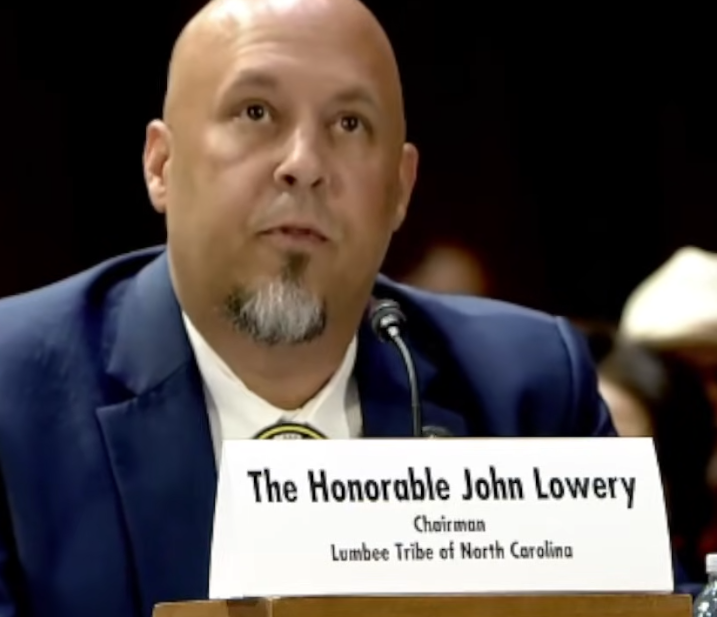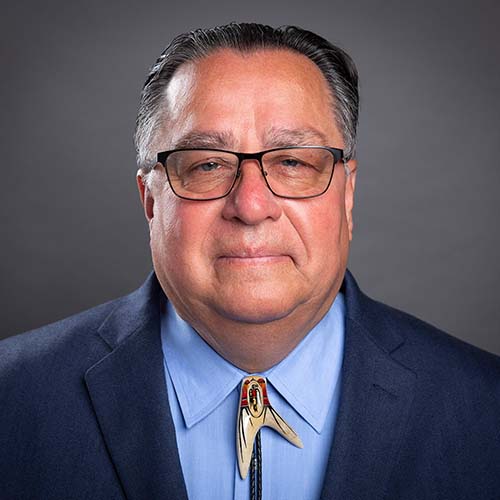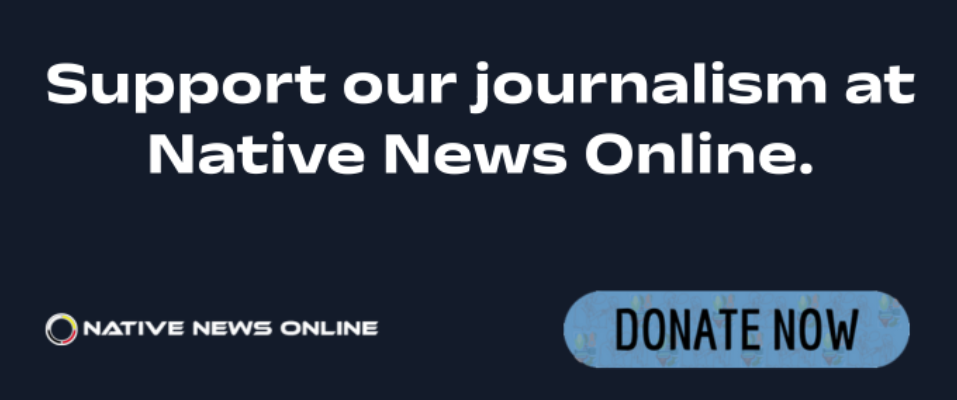
- Details
- By Shaun Griswold
This week, the Lumbee Tribe stood forward with near total support from U.S. leaders, including President Donald Trump, who made it his Native American Heritage month priority to usher along federal tribal sovereignty that the Lumbee have sought since at least Civil War-reconstruction.
“I'm a direct descendant of Henry Barry Lowry, who, during the Civil War, led a campaign against the Confederate Home Guard as they encroached on Lumbee Land and conscripted our Indian people,” Lumbee Tribe chairman John Lowery testified Wednesday to the Senate Committee on Indian Affairs. “I am a direct descendent of Solomon Locklear, Sr., one of the 44 tribe leaders who, in 1888, 1888, petitioned Congress to recognize the Lumbee Tribe, an essential step toward securing federal funding for our children's education.”
Descendency and a lawful claim to rights under trust and treat obligations to Native American tribes is at the heart of the Lumbee’s fight to fully execute its tribal sovereignty that exists through people like Lowery, and with the dozens of kin that sat behind him in Washington D.C., along with thousands that live primarily in Robeson County, North Carolina. There, the state grants Lumbee tribal recognition that they have utilized to establish a government and cultural protections for up to 60,000 enrolled citizens.
The U.S. recognizes 574 tribal governments that can negotiate with the country with lawful claims to access land, health care and education under trust and treat obligations
In a statement to celebrate Native American Heritage Month, President Trump said Lumbee recognition was “long overdue.” WIthout explanation, the Department of Interior did not send a representative to the Senate meeting on Wednesday but did provide written testimony with full support to amending the 1956 Lumbee Act, writing that it would “extend federal recognition to the Lumbee Tribe and make the members of Lumbee Tribe eligible for all services and benefits provided by the federal government to Indian tribes.”
Federal recognition for Lumbee, the Interior wrote, “does not diminish the rights or status of currently federally recognized Indian tribes. The bill also authorizes the Department to acquire trust land for the benefit of the Lumbee Tribe within Robeson County, North Carolina.”
The Lumbee Tribe does currently receive state and some federal benefits. Congressional support for the Lumbee Protection Act has gathered momentum for the Lumbee to become the next federally recognized tribe.
This path is a contention that opponents brought to the Senate hearing Wednesday.
Chief for the Eastern Band of Cherokee Michell Hicks argued that the longstanding denial for Lumbee recognition by the Bureau of Indian Affairs through its Office of Federal Acknowledgement should hold. Ignoring it, would have longstanding consequences to all tribal sovereignty, he said, outlining historical evidence that the Lumbee misclaimed Cherokee heritage for school access.
“It is a pattern of shift in assertions, driven by circumstance, not historical evidence,” he said. “This is not fairness, it is abandonment of every safeguard that protects tribal sovereignty and identity.”
Chief Benjamin Barnes of the Shawnee Tribe and chairman of the National Native American Boarding School Healing Coalition testified to the Senate committee that the group has documents that show Carlisle Indian Boarding School denied nine Lumbee people and asserted that, “ they were only admitted after claiming, falsely, to be Cherokee.”
“The Lumbee have invoked boarding school history to claim indigenity,” he said. “Nine individuals now held up in Lumbee heritage narratives attempted to enroll at the Carlisle Indian School. Carlisle rejected them because they did not meet the federal definition of Indian. That is not survivorship. That is borrowing our pain to manufacture a political identity. Our children's trauma is not a credential.”
Arlinda Locklear, a Lumbee citizen and tribal attorney with experience on these matters going back to 1988, acknowledged the education issues were compromised by outdated policies like school segregation that left Lumbee without claim to attend schools for whites, Blacks or Native Americans.
She testified that Lumbee meet every characteristic for tribal existence that she defined with two Supreme Court cases.
“What is an Indian tribe? In (Montoya v. U.S.) the court said a body of Indians is a group of people of the same race, who are united in a community in a particular territory, and united under one leadership or government,” she said. With U.S. v. Sandoval, she argued that the court established authority to form nation-to-nation relations with tribes. Something that she said Lumbee have demonstrated in federal records going back to the 19th century, and generations of families that formed the Lumbee communities.
“You have developed the richest record that exists for any non-federally recognized tribe in this country, we have a record that allows you to proceed with full confidence that you would be extending full federal recognition for a tribe that truly exists as such,” she said. “You are recognizing a true Indian community.”
More Stories Like This
50 Years of Self-Determination: How a Landmark Act Empowered Tribal Sovereignty and Transformed Federal-Tribal RelationsCherokee Nation Launches Digital Dictionary to Support Language Revitalization
Prairie Band Potawatomi Nation Chairman Addresses Homeland Security Contract
Lancaster County to Recognize Conestoga-Susquehannock Tribe on Massacre Anniversary
How the Gaming Economy Helps Tribes Navigate Shifting Policies
Help us defend tribal sovereignty.
At Native News Online, our mission is rooted in telling the stories that strengthen sovereignty and uplift Indigenous voices — not just at year’s end, but every single day.
Because of your generosity last year, we were able to keep our reporters on the ground in tribal communities, at national gatherings and in the halls of Congress — covering the issues that matter most to Indian Country: sovereignty, culture, education, health and economic opportunity.
That support sustained us through a tough year in 2025. Now, as we look to the year ahead, we need your help right now to ensure warrior journalism remains strong — reporting that defends tribal sovereignty, amplifies Native truth, and holds power accountable.
 The stakes couldn't be higher. Your support keeps Native voices heard, Native stories told and Native sovereignty defended.
The stakes couldn't be higher. Your support keeps Native voices heard, Native stories told and Native sovereignty defended.
Stand with Warrior Journalism today.
Levi Rickert (Potawatomi), Editor & Publisher

